Reichspost Visor Cap
CATEGORY: Version
SKU: 71.GOR.01.001.000
Estimated market value:
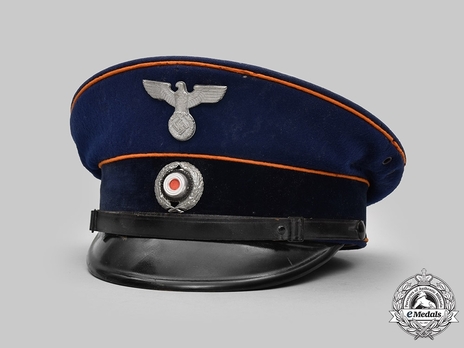
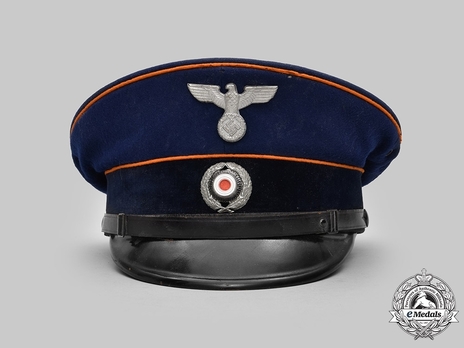
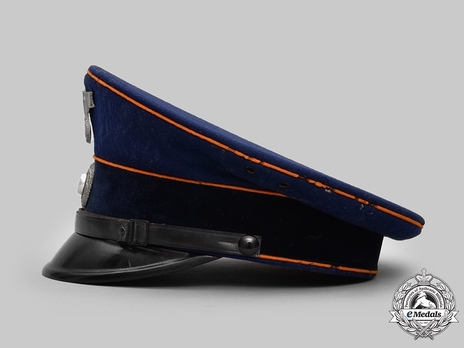
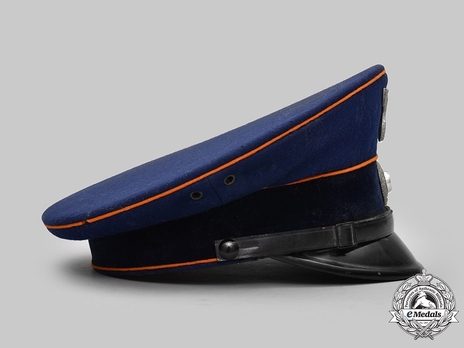
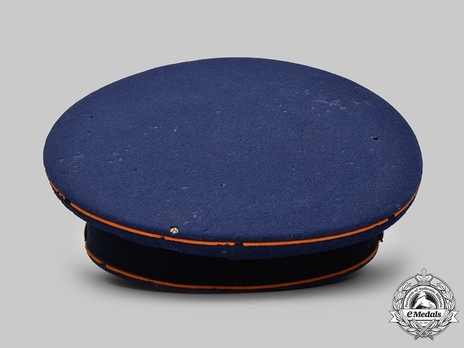
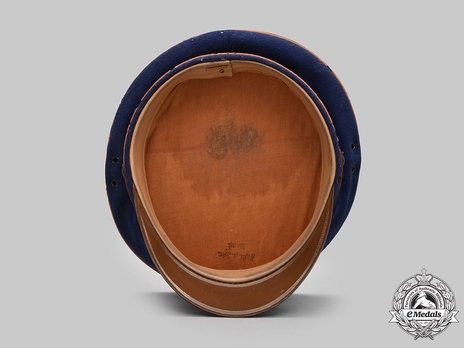
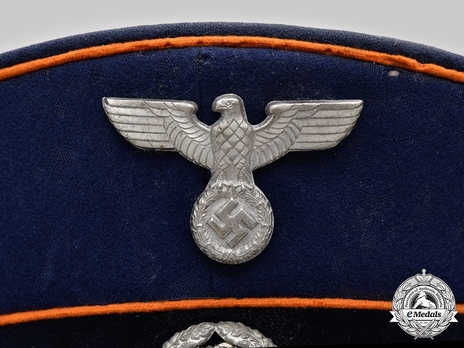
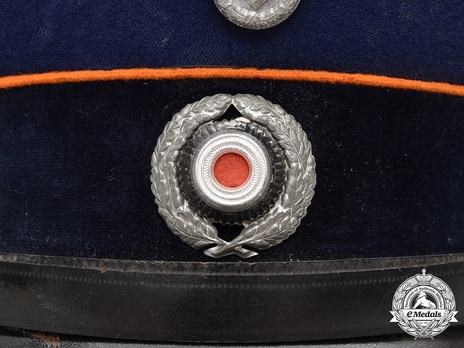
Estimated market value:
A Reichspost official’s visor cap, constructed of smooth dark blue wool. It features reinforced side walls, fully lined on the exterior with a black doeskin wool cap band. Both the top and bottom edges of the cap band are trimmed with red wool piping, while an additional length of identical piping fully lines the outer edge of the crown. Inset into each side of the crown are dual ventilation holes, all reinforced with blackened magnetic metal rivets. Pinned onto the centre of the cap band is an insignia consisting of a non-magnetic metal tri-colour cockade with a red wool centrepiece, set within a circular oak leaf wreath. The insignia measures 33 mm (w) x 35 mm (h) overall. It is flanked on each side by blackened magnetic metal rivets, securing in place a black leatherette chinstrap, adjusted with dual functional magnetic metal buckles. When not in use, the chinstrap rests upon a protruding vulcanfibre visor, finished in a glossed black on the obverse and in dark brown on the reverse. The interior of the side walls features a light brown leather sweatband, while the interior is also fully encompassed by a brown rayon liner. It presents plain with the exception of a partially-legible black stamp bearing a date of “1938” on the crown. It measures 240 mm (w) x 245 mm (l) x 145 mm (h). The cap is accompanied by an eagle insignia, constructed of a silvered zink alloy. Presenting as a government-style German national eagle clutching a wreathed mobile swastika, the eagle is unmarked, measures 58 mm (w) x 36 mm (h), and has lost all of its attachment prongs, with consequent attachment of putty. The hat demonstrates extensive issues consistent with age and use, including mothing and material fatigue throughout the exterior wool and piping, staining from attempts to reattach the eagle with putty, and some interior soiling. It is in an overall fair condition.
The German Reichspost (national postal service) was founded as a result of the transition from empire to Weimar Republic after the First World War. During the time of the empire, several German states had had their own postal service, but during the time of the Weimar Republic, the postal service was transformed into a unified, national, government-run operation. As such, during the time of the Third Reich, the postal service conformed with the NSDAP ideology and was used to further it. The Reichspost incorporated the postal services of annexed territories (i.e. Austria, Sudetenland) as well as conquered territories (i.e. Poland).
The Postschutz (postal service protection) was a paramilitary organisation tasked with protecting postal buildings and property. It was established in March of 1933. During the war, postal protection personnel stationed outside of the German borders in occupied territories were referred to as Deutsche Dienstpost.
Just like the Reichspost, the Postschutz used orange piping and orange cloth underlay for their garments and insignia. Unlike the Reichspost, however, the Postschutz uniform colour was field-grey. This was changed to brown in 1941.
Members of the Deutsche Dienstpost used the same uniforms and insignia as the Postschutz, but with green piping and cloth underlay.
In March of 1942, the Postschutz came under control of the Allgemeine SS and shortly after under control of the Waffen-SS. It was henceforth known as SS-Postschutz.
Feldpost (field mail) is the term for all mail sent to and from soldiers, either private letters for individuals or orders sent from one unit or office to another. Feldpost was entirely controlled by the German Wehrmacht (armed forces) and not a part of the regular Reichspost.
The Reichspost visor cap is dark blue with a cap band in a blue that is even darker, almost black. It features orange piping along the crown and above and below the cap band, as well as a black visor, and a chin strap or chin cord. Headgear insignia used are a cap eagle emblem at the front and below it, on the cap band, a wreath & cockade insignia.

Comments
Sign in to comment and reply.


Scroll Top